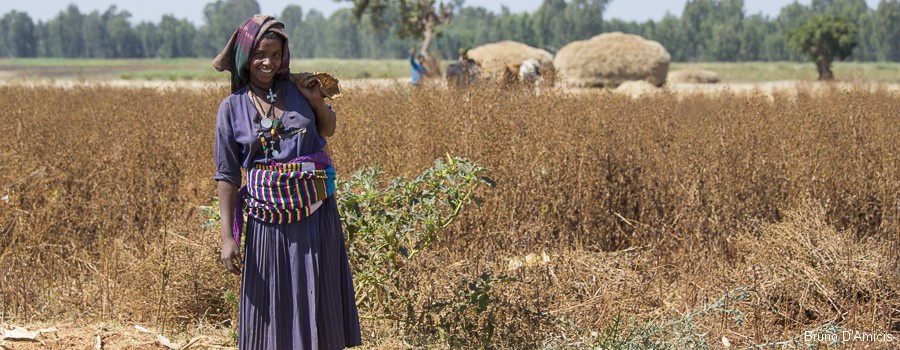
Peoples of the lake
The people around the shores of Lake Tana live as they have done for centuries. They are friendly, warm and hospitable. The area has been a focus for different peoples and cultures over many years. Let them welcome you to their home and bring your visit to life with the stories they share.
Amhara
The Amhara, who make up the majority of the population of the Lake Tana Biosphere Reserve, have a rich history which oral traditions trace back to the Ethiopian Emperor Menelik I who, as legend has it, was the son of King Solomon and the Queen of Sheba. The majority of the Amhara are Ethiopian Orthodox Christians and speak the Amharic language, which is in the same language family as Arabic and Hebrew. The people’s name is said to come from ‘amari’ meaning pleasing, beautiful and gracious. This is reflected in their unique clothing style: men wear gabi, large white cotton shawls draped over the shoulders and women wear elegant white robes and dresses with colourful embroidered and woven borders. They are well-known for their love of eloquent wordplay and poetry and are intensely attached to their land, mostly making a living through agriculture.
Tigrayan
The Tigrayan people are thought to be descended from the same group as the Amhara people. The Tigrayan speak the Tigrinya language, which is in the same language family as Amharic, Arabic and Hebrew. Like the Amhara, the Tigrayan people are traditionally farmers with strong ties to their land, ploughing the fields with oxen, sowing seed and harvesting by hand.
Negede Weyto
The Weyto are a small tribe that live in settlements on the northern and southern shores of Lake Tana. Their main activities are fishing, constructing papyrus boats and basket weaving. The Weyto once had their own language, but this has long been forgotten and they have now adopted Amharic. The Weyto people are not landowners and live simply, constructing their homes from clay, mud, wood and grass.
Beta Israel
Tana was the homeland of the Falasha or Beta Israel people who practice a form of Judaism that was separated from the mainstream Jewish faith before 650BC. Many of the Beta Israel were airlifted to Israel in the 1980s and 1990s and now only a few isolated communities remain. They are skilled craftsmen and famous for their beautifully crafted pottery.
Oromo
While the Oromo are the largest ethnic group in Ethiopia, they are mainly concentrated in the Oromia Region in central Ethiopia, making up only a small percentage of the population of the Lake Tana Biosphere Reserve. The Oromo people are traditionally herdsmen and warriors, although nowadays most of them live as farmers and cattle breeders. They are Muslim, Christian and Animist in religion and speak the Oromo language.
Agaw and Qemant
The Agaw and the Qemant live in small scattered settlements in the Lake Tana Biosphere Reserve. An ancient people that settled in the northern and central Ethiopian Plateau, they are associated with the development of agriculture and animal husbandry in the area. Their language contributed to the development of the Amharic language. The Agaw groups have traditionally practised a land-management system that is well adapted to the local ecology, which enables them to sustain the fertility of the soil and minimize erosion.
